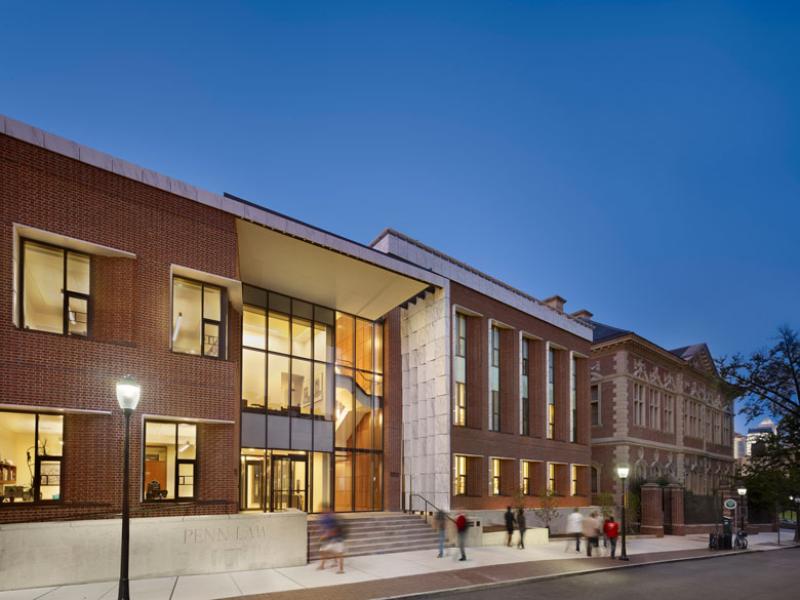The University of Pennsylvania's Carey Law School, one of the nation’s oldest and most distinguished law schools, is renowned for providing a cross-disciplinary legal education in an intimate environment that encourages collaborative scholarship and study. Dedicated in 2012, Golkin Hall serves as Penn Law's main entrance and features faculty offices, research centers, administrative offices, student organizations, teaching facilities, and spaces designed for interactions that foster the cross-disciplinary thinking for which Penn Carey Law is widely known.
Golkin Hall
The University of Pennsylvania's Carey Law School, one of the nation’s oldest and most distinguished law schools, is renowned for providing a cross-disciplinary legal education in an intimate environment that encourages collaborative scholarship and study. Dedicated in 2012, Golkin Hall serves as Penn Law's main entrance and features faculty offices, research centers, administrative offices, student organizations, teaching facilities, and spaces designed for interactions that foster the cross-disciplinary thinking for which Penn Carey Law is widely known.
The approximately $30 million, 40,000-square-foot renovation of Golkin Hall, designed by architects Kennedy & Violich, followed a multi-year, $18 million, top-to-bottom renovation of three of Penn Law's interconnected buildings.
The new building and the reassigned spaces promote the collegial and collaborative environment that supports that educational mission. A key architectural goal for the complex was to enhance existing interactions and facilitate new ones between faculty members, between students, and among faculty, students, and staff. The new building is respectful of the existing facility, particularly historic Silverman Hall and of the interior Courtyard. The new wing also celebrates the presence of Golkin Hall in its urban setting and symbolize Penn’s commitment to the community of which it is a part.
The former Pepper Hall was completely replaced with a multi-story, multi-use facility. The new building provides increased space in the complex for faculty offices, research centers, administrative offices, student organizations, teaching facilities, and spaces designed for interactions that foster the cross-disciplinary thinking for which Penn Law is widely known.
